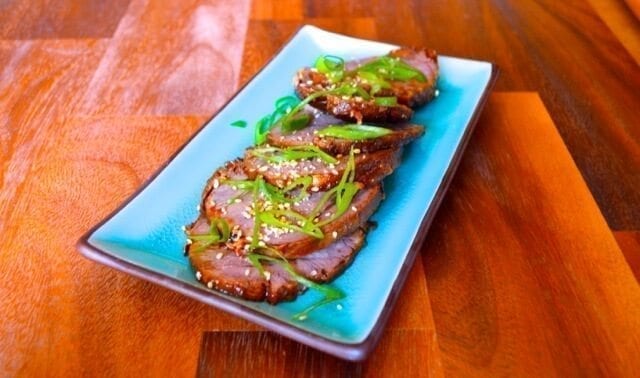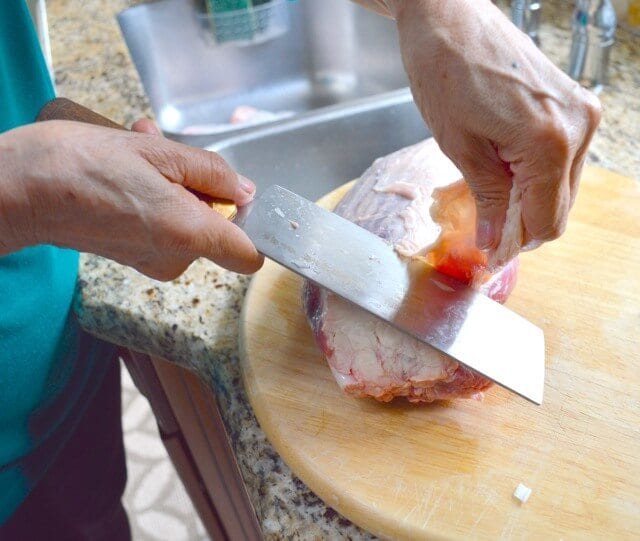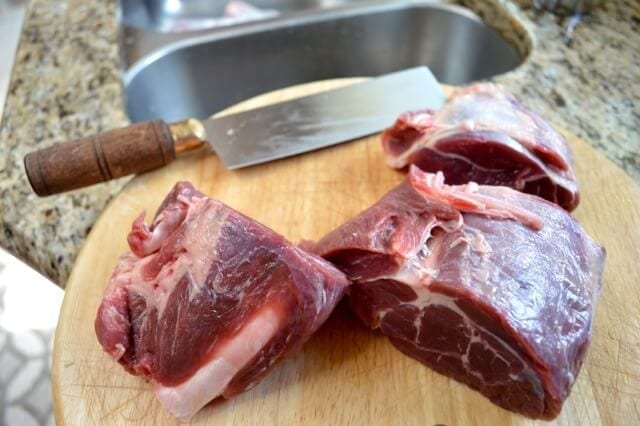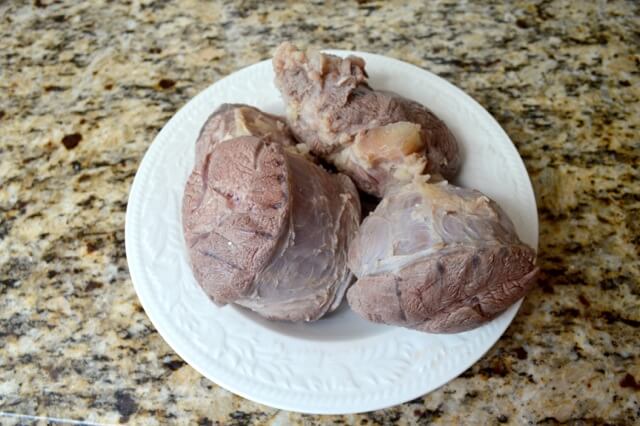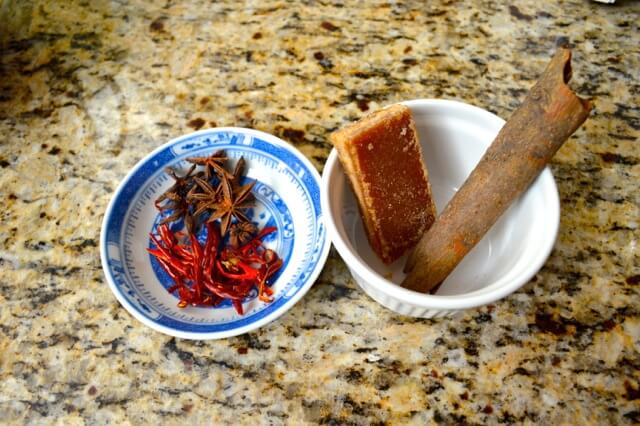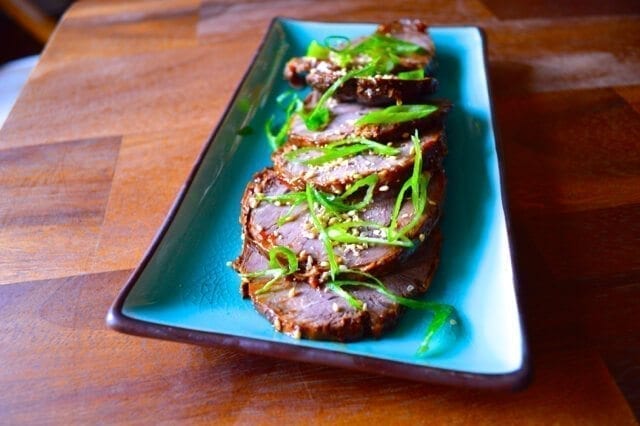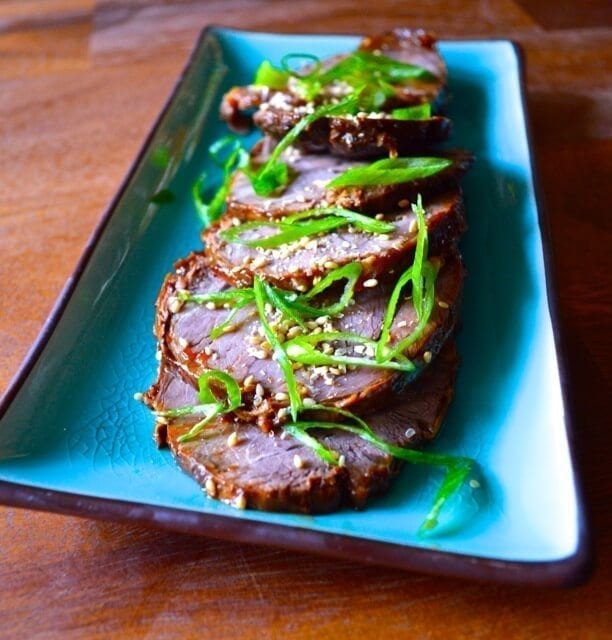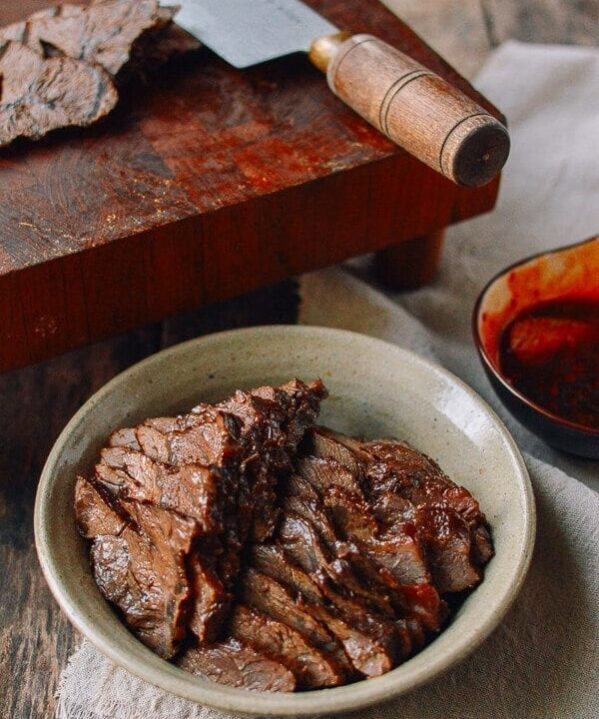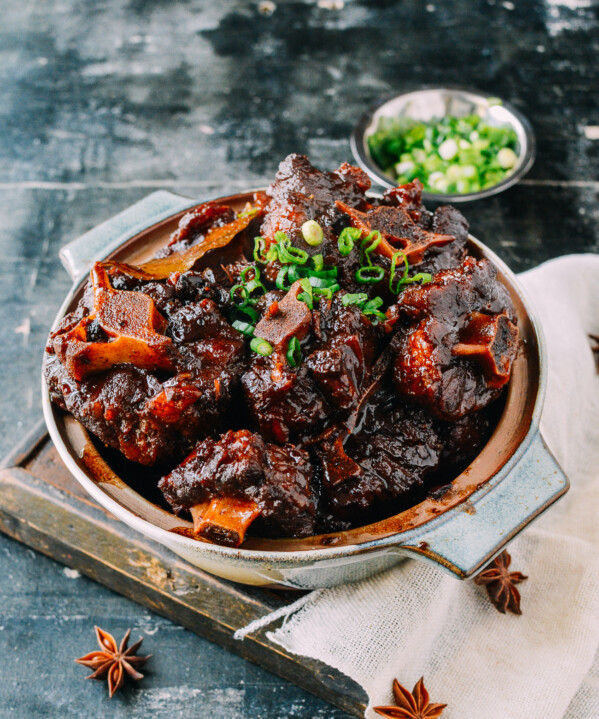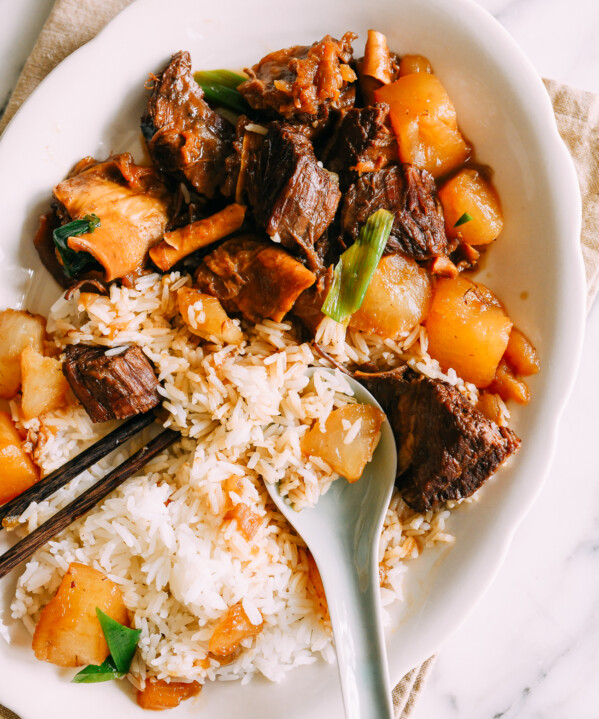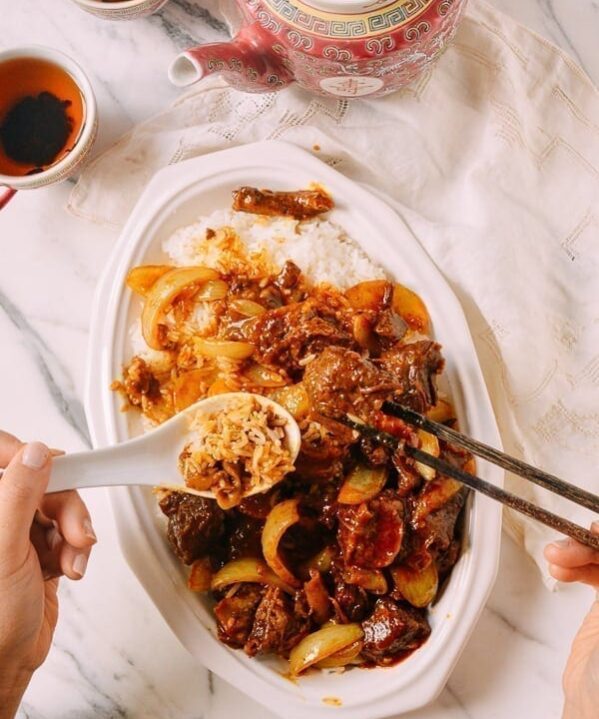Chinese Braised Beef Shank is a traditional cold sliced beef dish that’s often found as an appetizer at Chinese banquet-style dinners. It’s great on its own or garnished with some sesame seeds and chopped scallion. Oh yeah, and this is also one of our “Cooking with Grandma” recipes, so it’s totally coming from a reputable source.
It’s also lovely in noodle soups. Just boil up some rice noodles, heat up some chicken stock with a few slices of ginger, get yourself some raw bean sprouts, thinly sliced onion, chopped scallion, lime wedges, fresh cilantro and thai basil, and throw this beef into the bowl.
Voila! You’ve got a pretty good mash-up: Chinese braised beef shank in a Vietnamese pho. Add some Sriracha to the mix, and you’ve got a party.
Just an idea.
…a really good idea.
You should totes do it.
Just sayin’.
Moving on.
Recipe Instructions
First, you’re going to want to trim the excess fat off the beef. Just carefully slide your knife across the meat, pulling up the fat as you go. Here’s a photo of the process, as demonstrated by Grandma. Look at that expert skill!
Then cut the shank into two to three 1 lb. chunks. This’ll make it easier to fit all the meat into the smaller pot that we plan to use. You don’t want to use a pot that’s too deep or wide for this recipe, since you want the meat to be submerged as much as possible by the braising liquid.
Boil a pot of water and boil the beef for about 8 minutes. This mellows out the flavor and gets rid of any excess fat or other impurities.
Drain and rinse the meat.
Put the boiled beef shanks in a small, deep saucepan over medium-low heat and add the Shaoxing wine, soy sauce, dark soy sauce, star anise, dried red chili, rock sugar, and Chinese cinnamon.
Make sure the meat is all coated in the sauce, rolling it around in the pot for a few minutes.
Add enough water to submerge the meat about 2/3 of the way (you may need more or less depending on the size and shape of your pot). Turn the heat to medium-high, cover the pot, and bring it to a boil. Once it’s boiling, lower the heat and simmer, covered, for 2 hours. Every 30 minutes or so, uncover the pot and flip over the meat. This ensures that the marinade distributes evenly.
Turn off the heat and allow the meat to sit in the covered pot for about 2 hours, turning once again halfway through the cooling process.
Then allow the meat to cool completely in the refrigerator, preferably overnight. This is a crucial step, as it allows you to slice the beef without it falling apart later. (Don’t worry. This will alllll be worth it in the end).
Take it out of the pot, slice it thinly, and garnish with sesame seeds and scallions.
See?
Glorious.
Chinese Braised Beef Shank
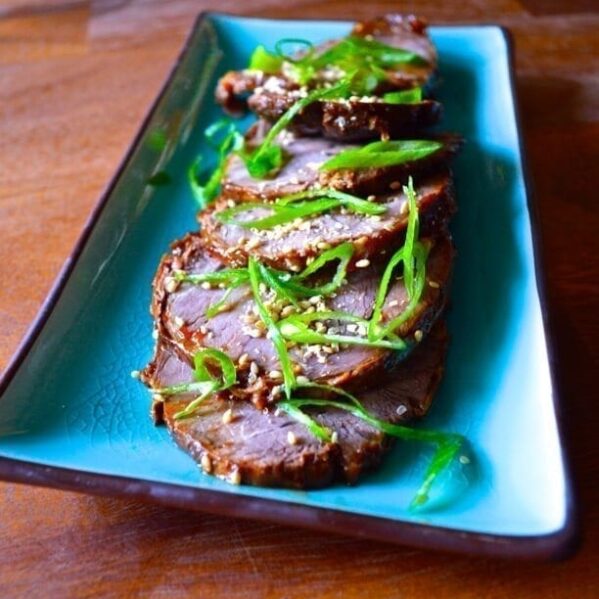
Ingredients
- 2-2/12 pounds boneless beef shank (about 1 kg)
- ½ cup shaoxing wine
- 4 tablespoons soy sauce
- 3 tablespoons dark soy sauce
- 7 pieces star anise
- 1 dried red chili (sliced)
- 1 tablespoon rock sugar
- 1 cinnamon stick (Chinese cinnamon/ceylon preferred)
Instructions
- Trim the excess fat off the beef and cut the shank into two to three 1 lb. chunks. Boil a pot of water and boil the beef for about 8 minutes. Drain and rinse the meat.
- Put the boiled beef shanks in a small, deep saucepan over medium-low heat and add the wine, 2 kinds of soy sauce, star anise, chili, rock sugar, and cinnamon.
- Make sure the meat is all coated in the sauce, rolling it around in the pot for a few minutes.
- Add enough water to submerge the meat about 2/3 of the way (you may need more or less depending on the size and shape of your pot). Turn the heat to medium-high, cover the pot, and bring it to a boil. Once it’s boiling, lower the heat and simmer, covered, for 2 hours. Every 30 minutes or so, uncover the pot and flip over the meat. This ensures that the marinade distributes evenly.
- Turn off the heat and allow the meat to sit in the covered pot for about 2 hours, turning once again halfway through the cooling process.
- Then allow the meat to cool completely in the refrigerator, preferably overnight. Take it out of the pot, slice it thinly, and garnish with sesame seeds and scallions.
